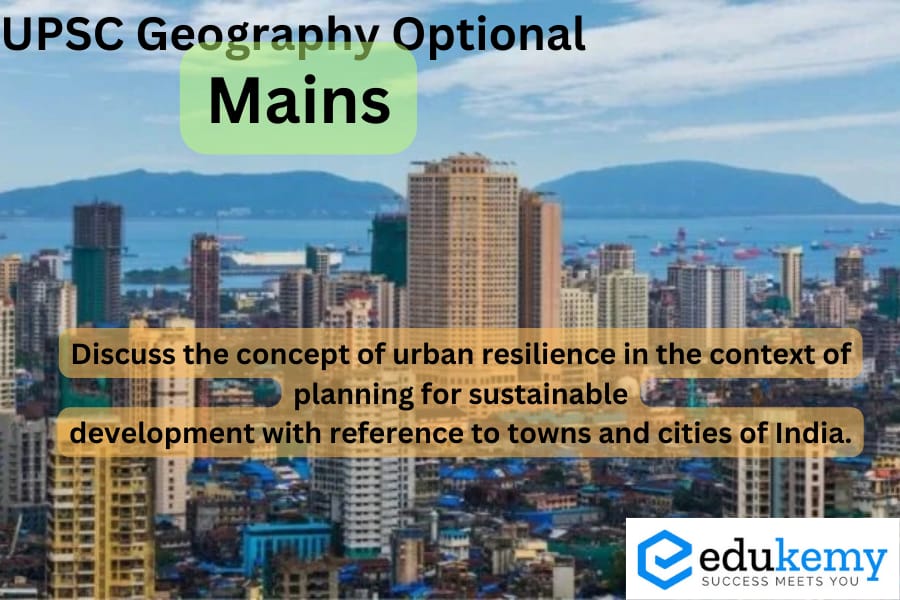
Urban resilience refers to the capacity of a city to bounce back from and adapt to various shocks and challenges while maintaining essential functions and services for its residents. Urban resilience emphasizes not just survival but also the ability of cities to adapt, transform, and grow in the face of these challenges.
Urban resilience and sustainable development
Urban resilience and geographical vulnerability of Indian towns
- Many Indian cities are situated in regions prone to natural disasters such as floods, cyclones, earthquakes, and heatwaves.
- Understanding the geographical vulnerabilities of these areas is crucial for planning resilient infrastructure and settlements.
- For example, Mumbai and Chennai are susceptible to flooding due to their coastal location and monsoon patterns.
Climate resilience of Indian towns
- With the increasing impacts of climate change, Indian cities are experiencing shifts in temperature, rainfall patterns, and extreme weather events.
- For example, Bengaluru, known for rapid urbanization and dwindling green cover, is experiencing water scarcity increased by climate change. In response, the city has initiated projects like rainwater harvesting systems, rejuvenation of lakes, and promotion of water-efficient practices in industries and households to improve resilience to water stress.
Social resilience of Indian towns
- Social cohesion and community engagement are essential components of urban resilience.
- This can include initiatives such as community-based disaster preparedness programs and participatory urban planning processes.
- For example, after floods in Kerala in 2018, communities came together to rebuild homes, restore livelihoods, and provide support to those affected. Non-governmental organizations (NGOs) played a crucial role in coordinating relief efforts and facilitating community-led initiatives.
Infrastructure resilience of Indian towns
- Developing robust infrastructure systems is critical for ensuring the continuity of essential services during and after disasters.
- For example, Surat is vulnerable to cyclones and flooding and has invested in resilient infrastructure such as stormwater drainage systems, flood control embankments, and emergency response mechanisms, ensuring the continuity of essential services during emergencies.
Economic Resilience of Indian towns
- Economic diversity and adaptive capacity are essential for urban resilience.
- For example, Coimbatore has diversified its economy by promoting sectors such as information technology, textiles, and manufacturing. This has helped the city withstand economic shocks and adapt to changing market conditions, contributing to its overall resilience.
The Smart Cities Mission, Atal Mission for Rejuvenation and Urban Transformation (AMRUT), National Urban Livelihoods Mission (DAY-NULM), National Urban Health Mission, National Disaster Management Plan are steps in the right direction taken by the Indian government for improving the urban resilience of Indian towns and cities.
Contents
In case you still have your doubts, contact us on 9811333901.
For UPSC Prelims Resources, Click here
For Daily Updates and Study Material:
Join our Telegram Channel – Edukemy for IAS
- 1. Learn through Videos – here
- 2. Be Exam Ready by Practicing Daily MCQs – here
- 3. Daily Newsletter – Get all your Current Affairs Covered – here
- 4. Mains Answer Writing Practice – here

